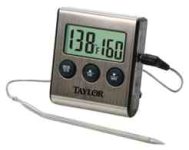Obiwan007
1 kW
So I have a small problem, my situation is that I just upgraded my wife's bike (the electric Jeepster) to a clyt HS4060 motor (thanks Ilia from ebikessf). This motor has a thermistor built in and I was planning to just hook it up the previous BBQ temp gauge I was happily using before. I had originally set it up this way with the clyt 408 motor before I knew...well...anything! This bike was built with the CA V2.3 so no temp sense or thermal roll-back. Anyway. got the new motor in and running and hooked up the temp sensor only to find that it reads radically different than it should. At ambient on a cool day it was reading 146 degrees C. I surmise that the old system used a different type of thermistor like an LM35. I'm pretty sure that the 4060 has a 10K thermistor in it to cooperate with the CA V3. I don't want to pull this motor apart to replace the sensor so I'm wondering if I can get a different, preferably inexpensive, display that will play nice with the 10K thermistor. I found this one that says it uses any "K type thermocouple":
http://www.coleparmer.com/Product/D...ermocouple_Thermometer_Fahrenheit/WU-86460-03
Does anybody know if this would work with the 10k thermistor in the crystalyte 4060? If so then I should be able to get a thermocouple plug to interface with the unit and I'll be good-to-go. Alternatively, does anybody know about an inexpensive temp gauge that will interface with the 10K thermistor?
Do you have any advice in this area? Can the HK display use either sensor? My electronic education is still in its infancy and it seems like you are stronger in this area. I don't think it is really necessary to have thermal roll-back on this bike but I am afraid to have not temp sensing at all. Any
http://www.coleparmer.com/Product/D...ermocouple_Thermometer_Fahrenheit/WU-86460-03
Does anybody know if this would work with the 10k thermistor in the crystalyte 4060? If so then I should be able to get a thermocouple plug to interface with the unit and I'll be good-to-go. Alternatively, does anybody know about an inexpensive temp gauge that will interface with the 10K thermistor?
Do you have any advice in this area? Can the HK display use either sensor? My electronic education is still in its infancy and it seems like you are stronger in this area. I don't think it is really necessary to have thermal roll-back on this bike but I am afraid to have not temp sensing at all. Any



